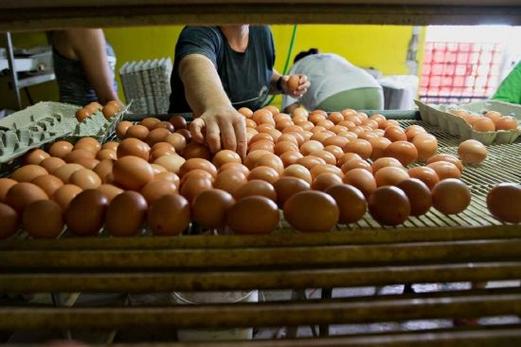
Nordic countries including Finland, Sweden and Denmark have all received messages from United States Department of Agriculture Yle, the Finnish Broadcasting Company seeking“Egg support”, however, complex trade barriers, differences in production standards and geopolitical tensions have overshadowed this international cooperation.
Since the 2022 outbreak, more than 116 million influenza A virus subtype H5N1 have reportedly been culled and egg production has plummeted. As of February 2025, the average price of large a-grade eggs in the US had surged by 59% year-on-year. At the beginning of March, it briefly hit an all-time high of US $8.15 per dozen, putting pressure on consumers and the food industry. To ease domestic supply pressure, the United States Department of Agriculture sought export support from Nordic countries including Denmark, Sweden and Finland.
Reported that the head of the Danish egg association Jørgen Larsen confirmed receiving a written request from the United States to assess the export potential for the next six months. “Finland has 4 million layers. The amount we can export does not solve the problem of egg shortages in the United States,” said Vera Lechtila, executive director of the Finnish Poultry Association
Max Lindstrom, chief executive officer of Crown Egg, Sweden’s largest egg supplier, revealed that the United States has approached it, but Europe itself is also facing egg shortages, priority will be given to supplying the internal market.
The Nordic countries have limited egg production of their own, and the transatlantic egg trade faces multiple obstacles in addition to the need to satisfy domestic demand first, the Danish public broadcaster reported. There are significant differences in egg production standards between the United States and Europe, which leads to difficulties in direct docking. Moreover, US tariffs on the Europeans in recent years and the Donald Trump administration’s threat of economic sanctions against the Danes for handing over control of Greenland have further strained relations.
As of mid-march, no Nordic country has yet started exporting eggs to the United States. Even if the Nordic countries agree to export, logistical and regulatory challenges can not be ignored, analysts say. The United States requires imported eggs to come with an official inspection certificate, which is reviewed by the food inspection agency upon entry, and Nordic producers go through an additional certification process. In addition, the high cost of transoceanic transportation and fresh-keeping technology constraints, further raise the actual landing difficulty.